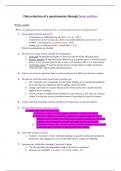Samenvatting
Summary Factor Analysis (Research Methods & Data Analysis) - WUR
This is a clear and comprehensive summary of factor analysis, which is half of the theory for the test of the WUR course 'Research Methods & Data Analysis' (YRM30806). Good luck with studying!
[Meer zien]




